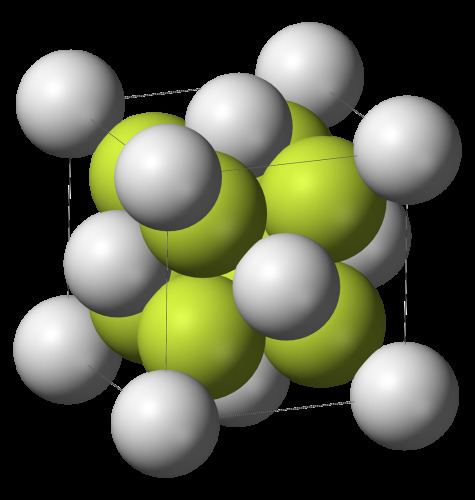 | ||
Difluorides are chemical compounds with two fluorine atoms per molecule (or per formula unit).
Contents
- List of the difluorides
- Alkaline earth metal difluorides
- Lanthanide difluorides
- Transition metal difluorides
- Post transition metal difluorides
- Nonmetal and metalloid difluorides
- Noble gas difluorides
- Bifluorides
- Organic difluorides
- References
Metal difluorides are all ionic. Despite being highly ionic, the alkali earth metal difluorides generally have extremely high lattice stability and are thus insoluble in water. One exception is beryllium difluoride. In addition, many transition metal difluorides are water-soluble.
Calcium difluoride is a notable compound. In the form of the mineral fluorite it is the major source of commercial fluorine. It also has an epynomic crystal structure, which is an end member of the spectrum starting from bixbyite and progressing through pyrochlore.
List of the difluorides
Examples of the difluorides include:
Alkaline earth metal difluorides
The alkaline earth metals all exhibit the oxidation state +2, and form difluorides. The difluoride of radium is however not well established due to the element's high radioactivity.
Lanthanide difluorides
Transition metal difluorides
Compounds of the form MF2:
Post-transition metal difluorides
Nonmetal and metalloid difluorides
Noble gas difluorides
Bifluorides
The bifluorides contain the two fluorine atoms in a covalently bound HF2− polyatomic ion rather than as F− anions.
